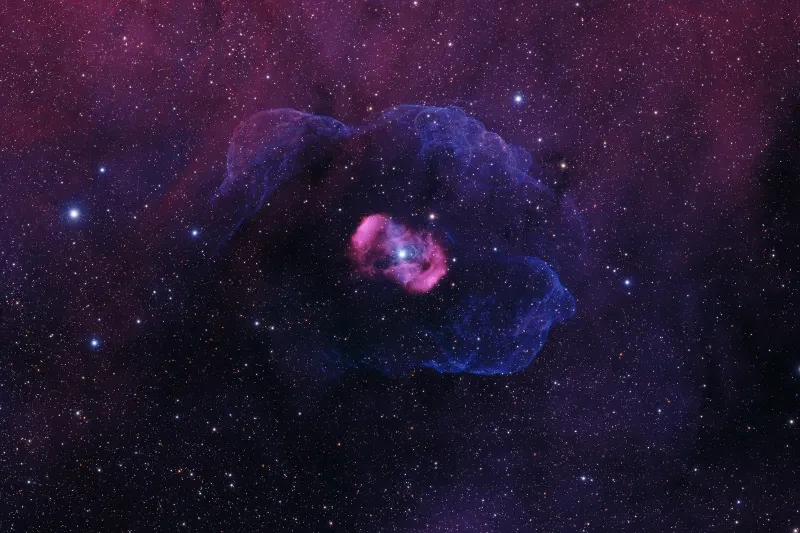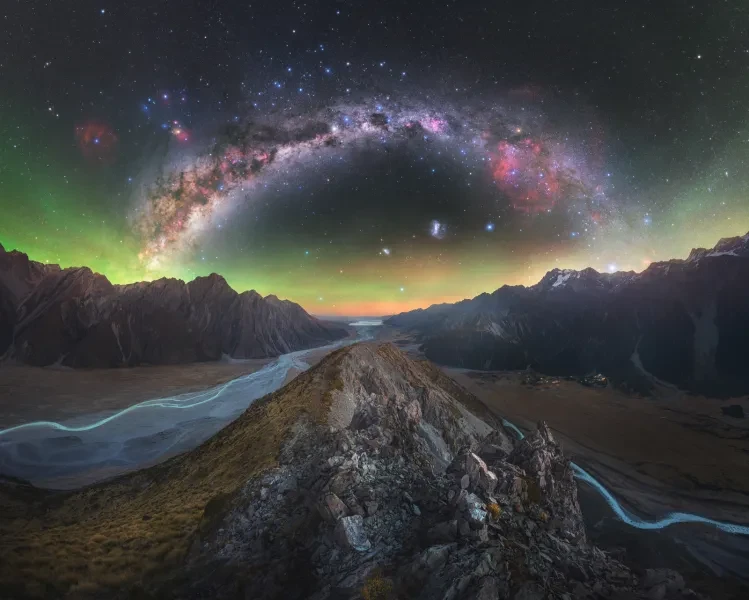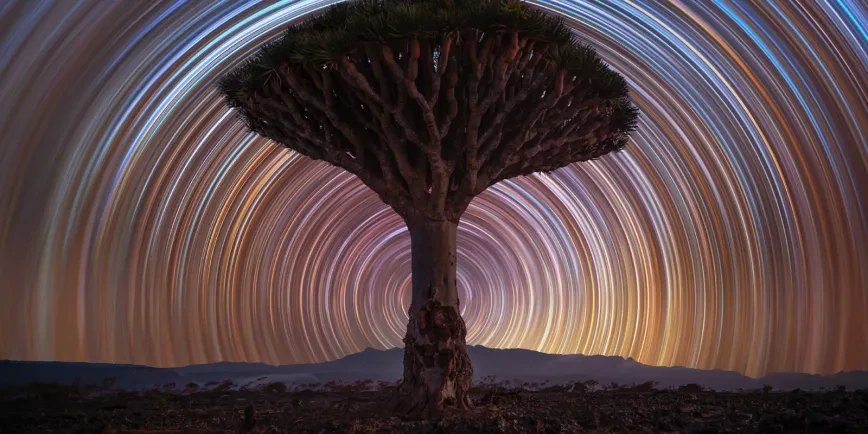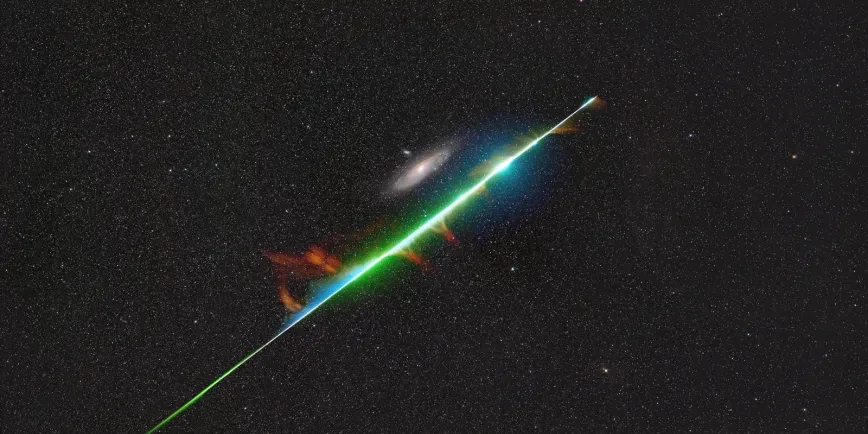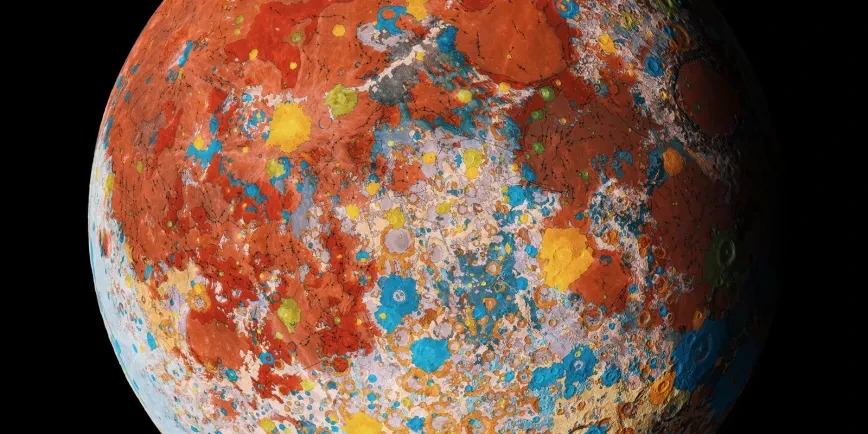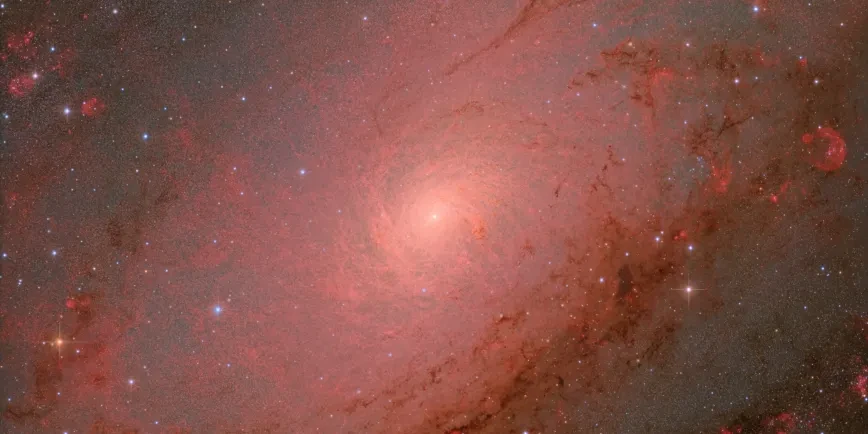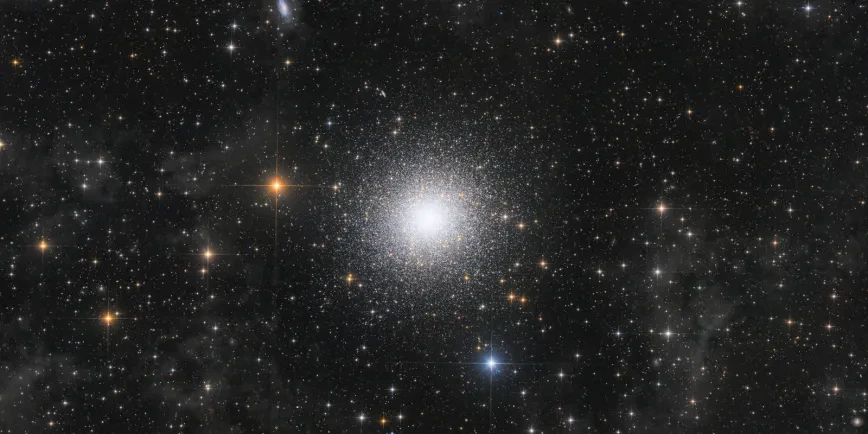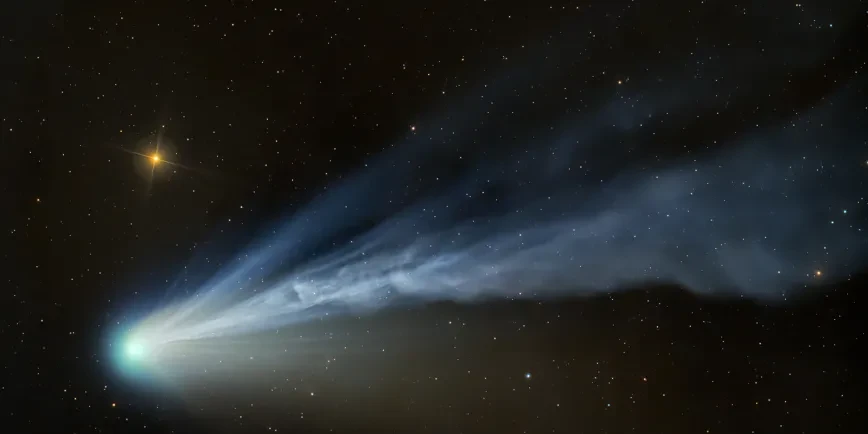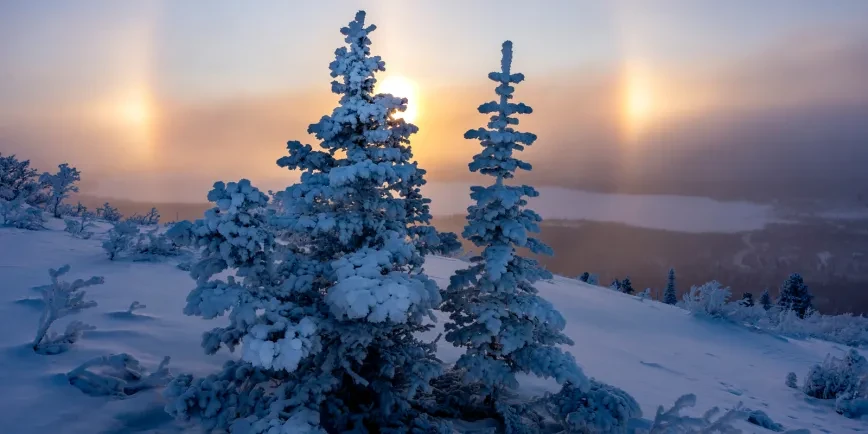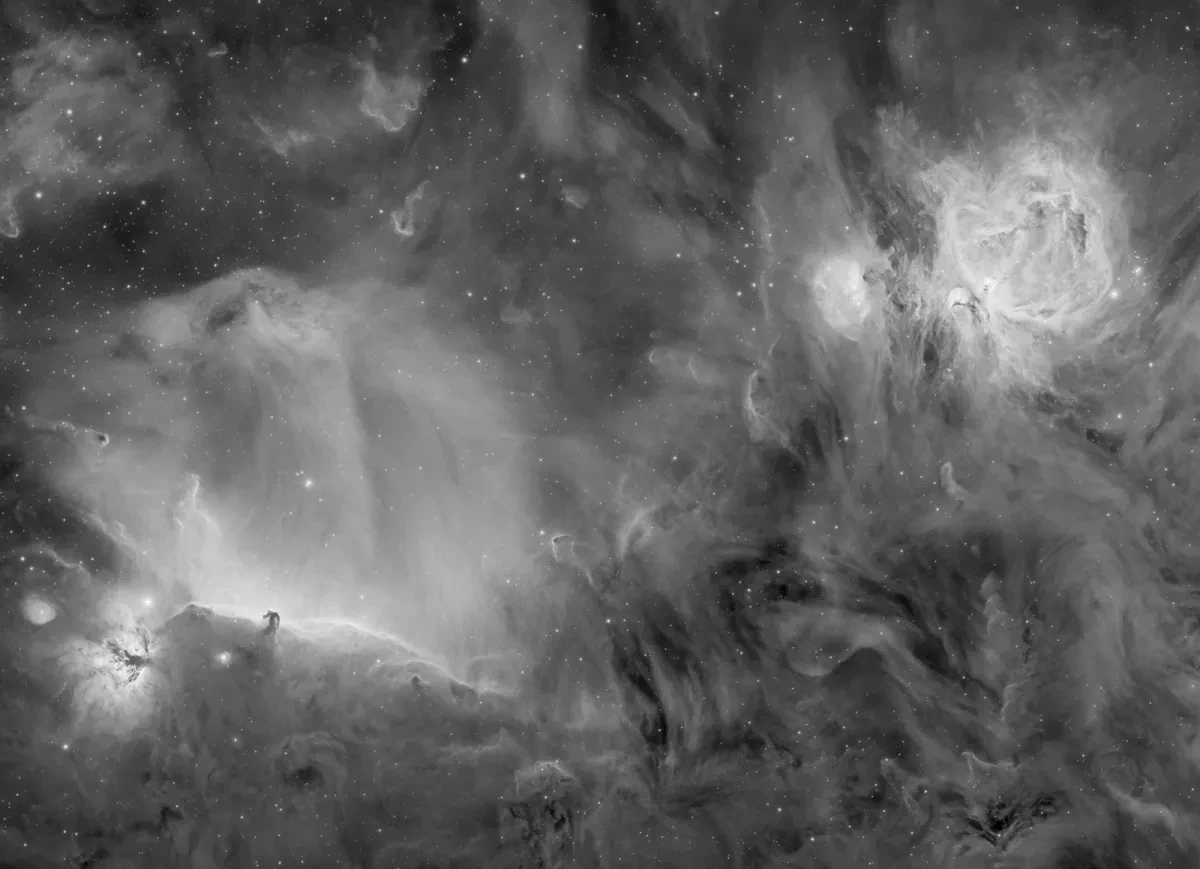
Category winner
Orion, the Horsehead and the Flame in H-alpha by Daniele Borsari
"This image was captured with an H-alpha filter to make a monochrome image highlighting the emission nebulae," Daniele explains.
"On the lower left lies the Horsehead Nebula, also known as Barnard 33. This dense dark cloud of gases hides the light coming from the emission nebula IC 434 and creates the apparent shape of a horse’s head.
"A little to the left we find the Flame Nebula, NGC 2024. The star responsible for the illumination of this nebula, IRS2, is located behind dust and gases and is therefore not visible in the optical spectrum.
"And finally, in the upper-right of the image, is M42, famously known as the Orion Nebula. This nebula is a huge cloud of dust and gas where a lot of new stars are born. The energy released by the four central stars (the Trapezium Cluster) shapes the nebula, ionising the gas components."
Taken in Leffe, Bergamo, Italy, 11, 14–15 January and 6 February 2025

Runner-up
C/2023 (Tsuchinshan−ATLAS): The Great Comet of 2024 by Holden Aimar
"C/2023 A3 (Tsuchinshan−ATLAS), known as the Great Comet of 2024, was a comet from the Oort Cloud [a giant spherical shell made of icy, comet-like objects that surrounds our Solar System] discovered on 9 January 2023," Holden explains.
"It was visible around the world through September and October of 2024. It was the first comet I saw in real time with my own eyes."
Taken in Woodhaven, Michigan, USA, 17 October 2024
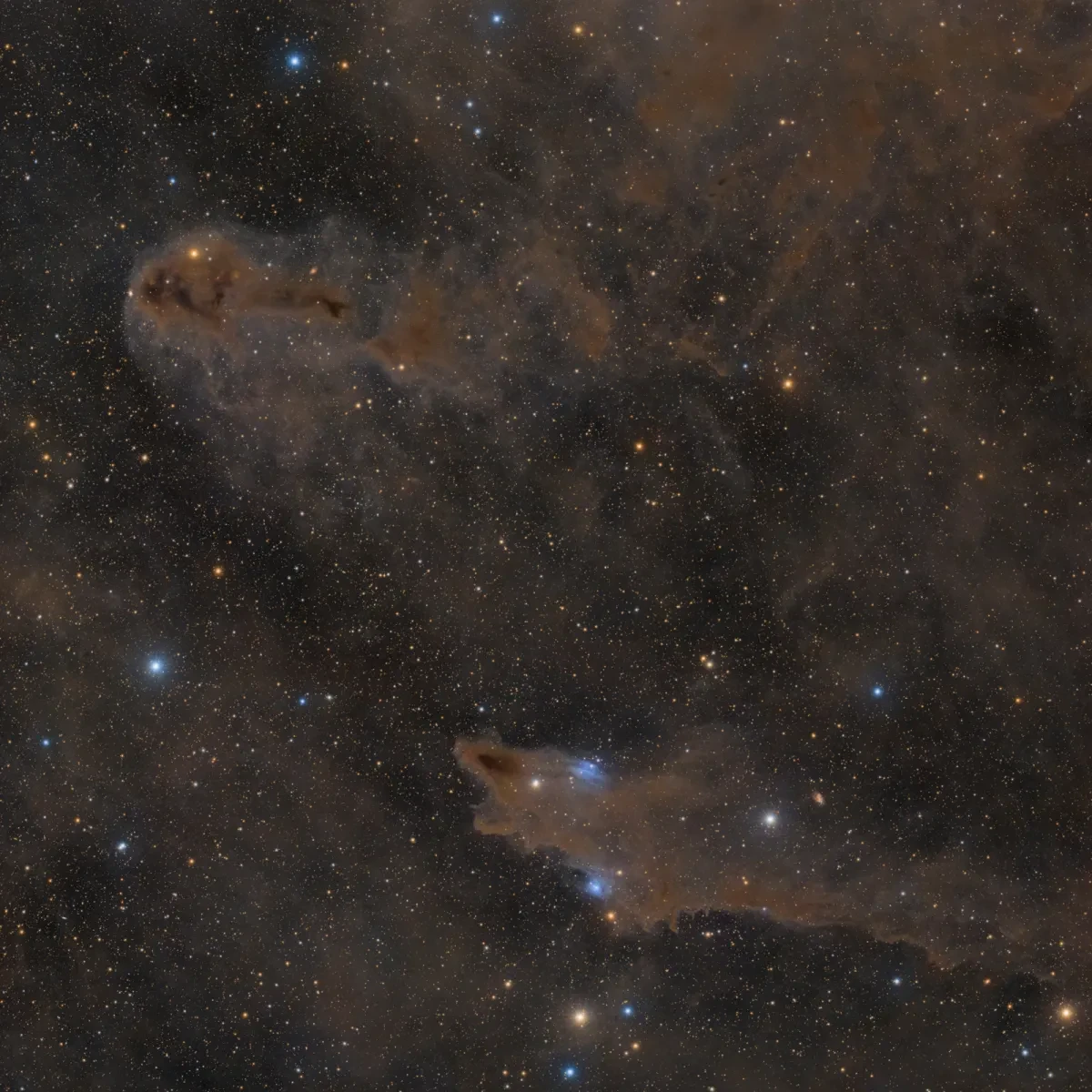
Highly commended
The Shark and the Rotten Fish Nebulae in an Ocean of Dust by Daniele Borsari
"This image shows various objects, from dark nebulae to reflection nebulae and even some distant galaxies," Daniele says.
"All the nebulae in the foreground are part of the Cepheus molecular cloud complex, a network of molecular clouds (650 to 1,500 light years from Earth) where new stars are born.
"Some areas are lit up by the newborn stars themselves, while others are so dense that they block the optical spectrum of light coming from behind them. The largest objects in the image are the Shark Nebula (LDN 1235) and the Rotten Fish Nebula (LDN 1251)."
Taken in Leffe, Bergamo, Italy, 28–29 August, 1–2, 9 September, 10, 29–31 October and 1–3 November 2024

Highly commended
Total Solar Eclipse by Louis Egan
"On this fateful day in April 2024, I had the chance to witness a total solar eclipse for the first time and I was able to capture a massive 22-megapixel panorama showing the different stages of the eclipse, with a high dynamic range (HDR) image of totality in the middle − revealing both the bright corona and finer details otherwise lost in standard exposures," Louis reflects.
Taken in Coaticook, Quebec, Canada, 8 April 2024
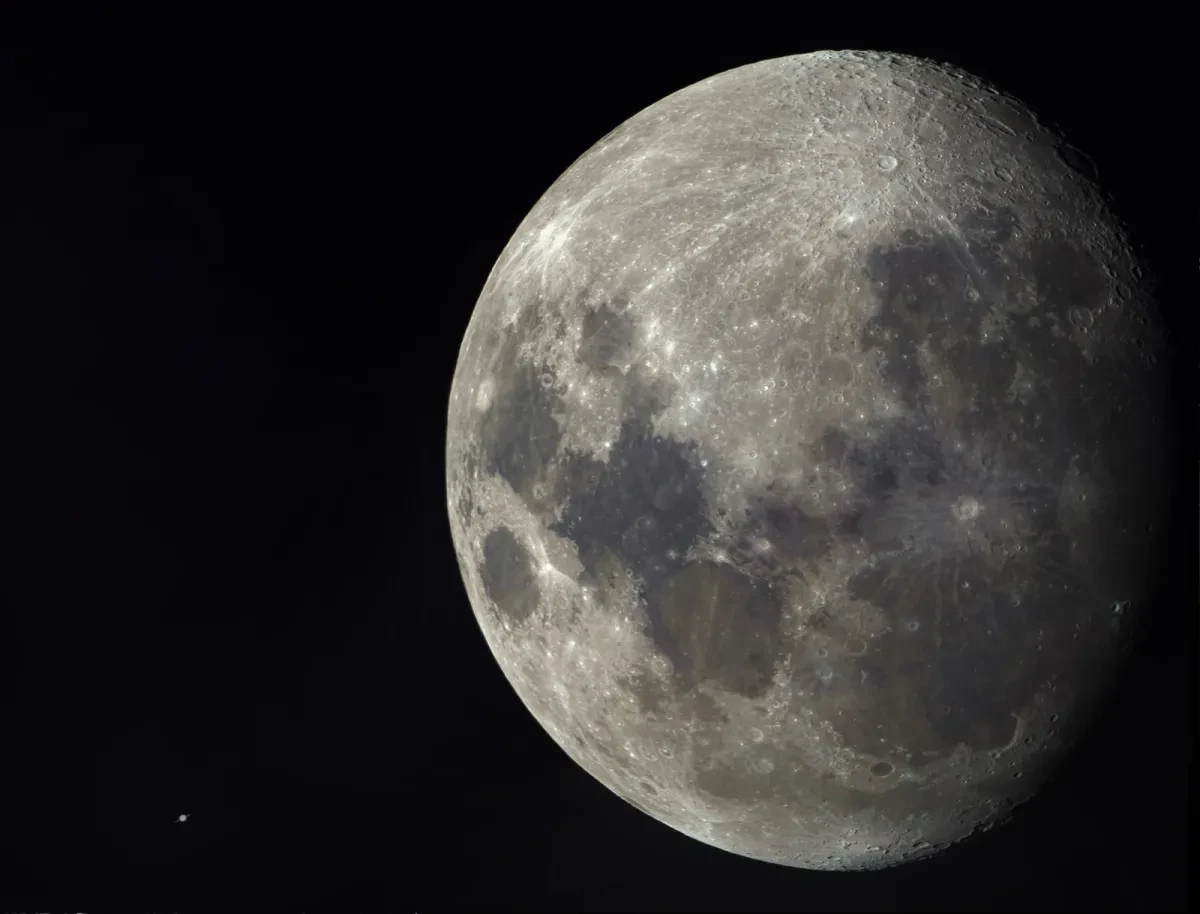
Highly commended
The Moon With Saturn by Shamiqh Gajdhar
"This image captures the conjunction of the Moon and Saturn, when they were exceptionally close in the night sky. It was an ideal night for astrophotography, with clear skies providing perfect visibility," Shamiqh remembers.
"To bring out the intricate details, I processed the image using Photoshop and Registax 6, enhancing sharpness and clarity. The image is a seven-panel mosaic, carefully stitched together to showcase the Moon’s surface in stunning detail and Saturn in its full glory against the black backdrop of space."
Taken in Jeddah, Makkah Province, Saudi Arabia, 14 October 2024
See the full shortlist
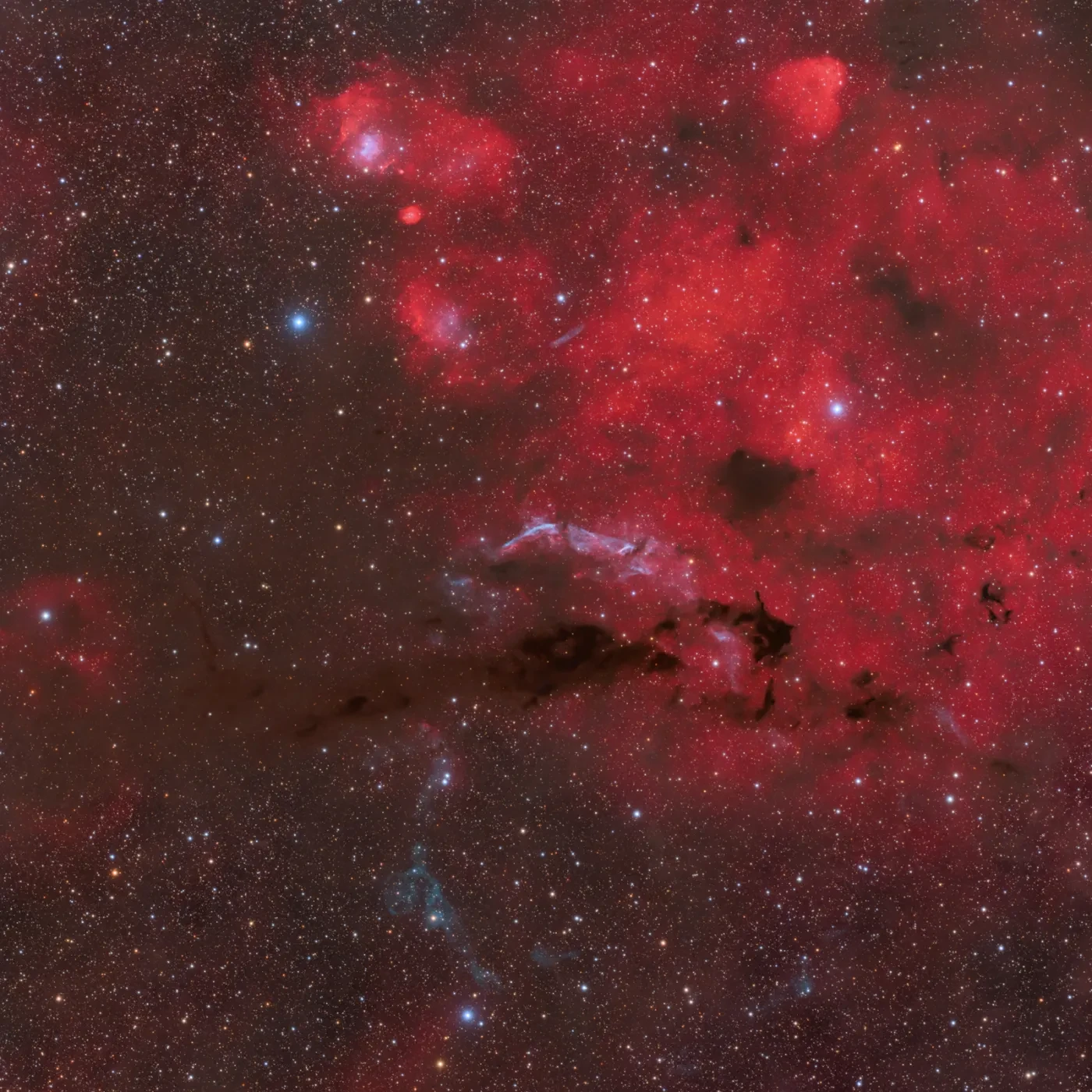
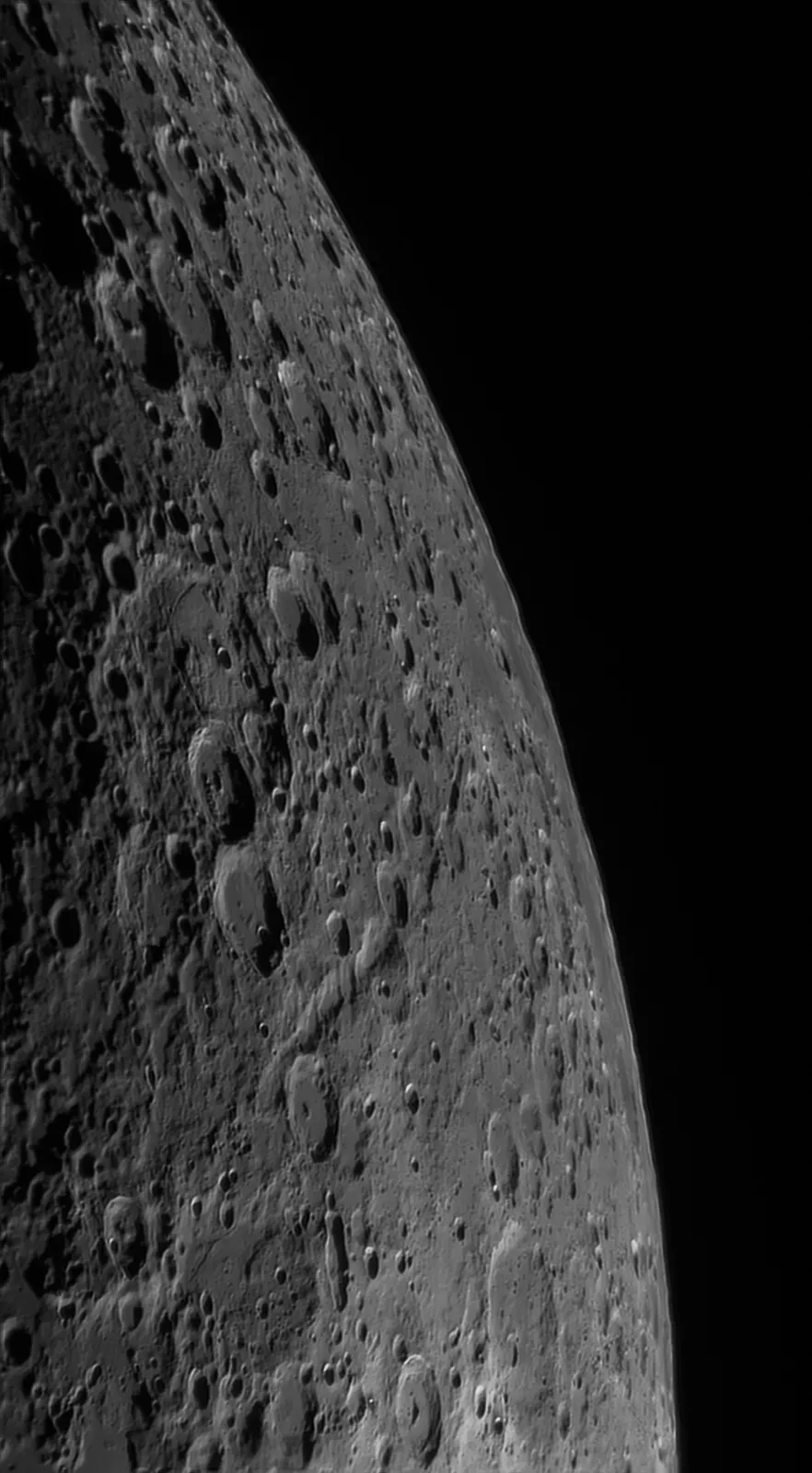
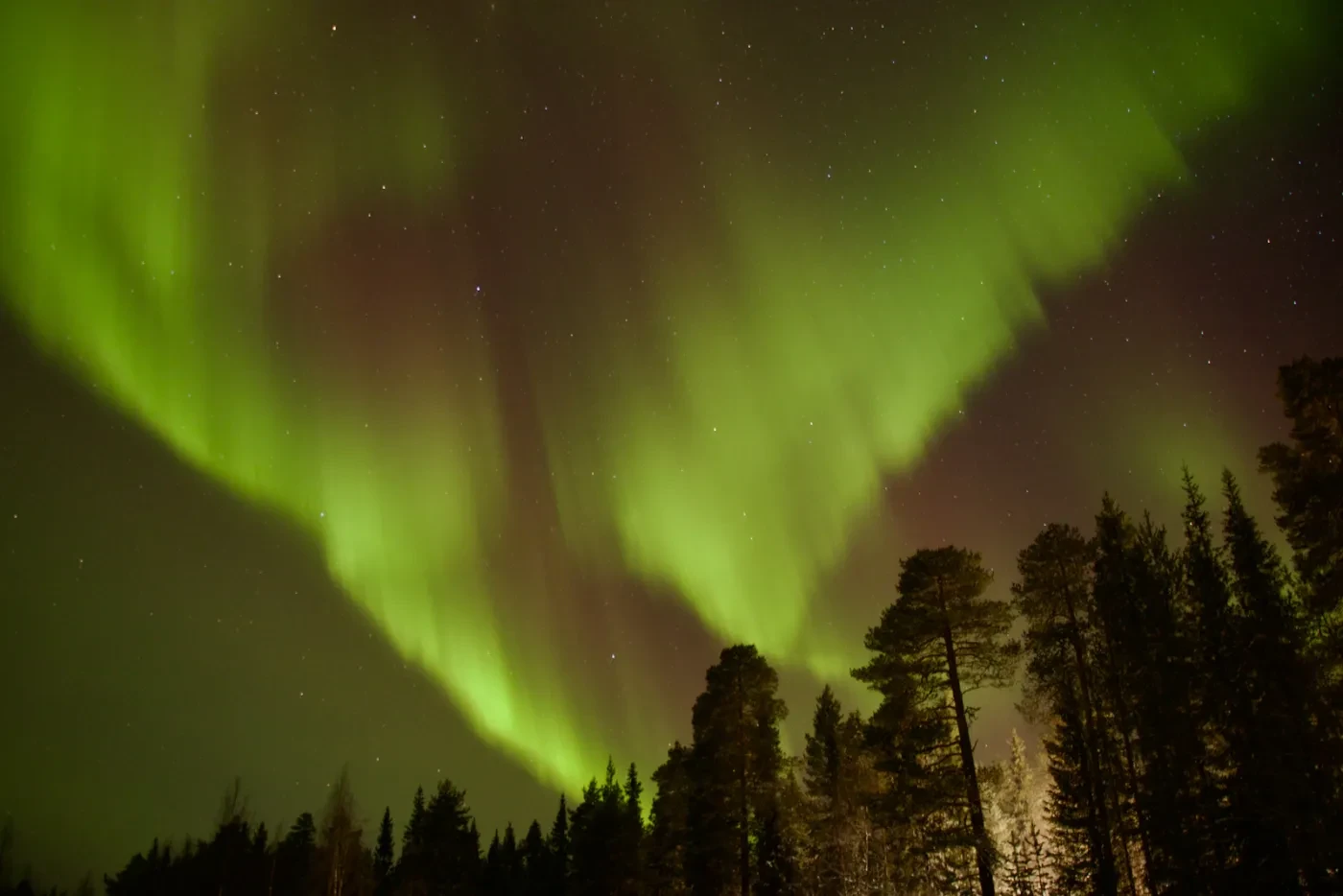
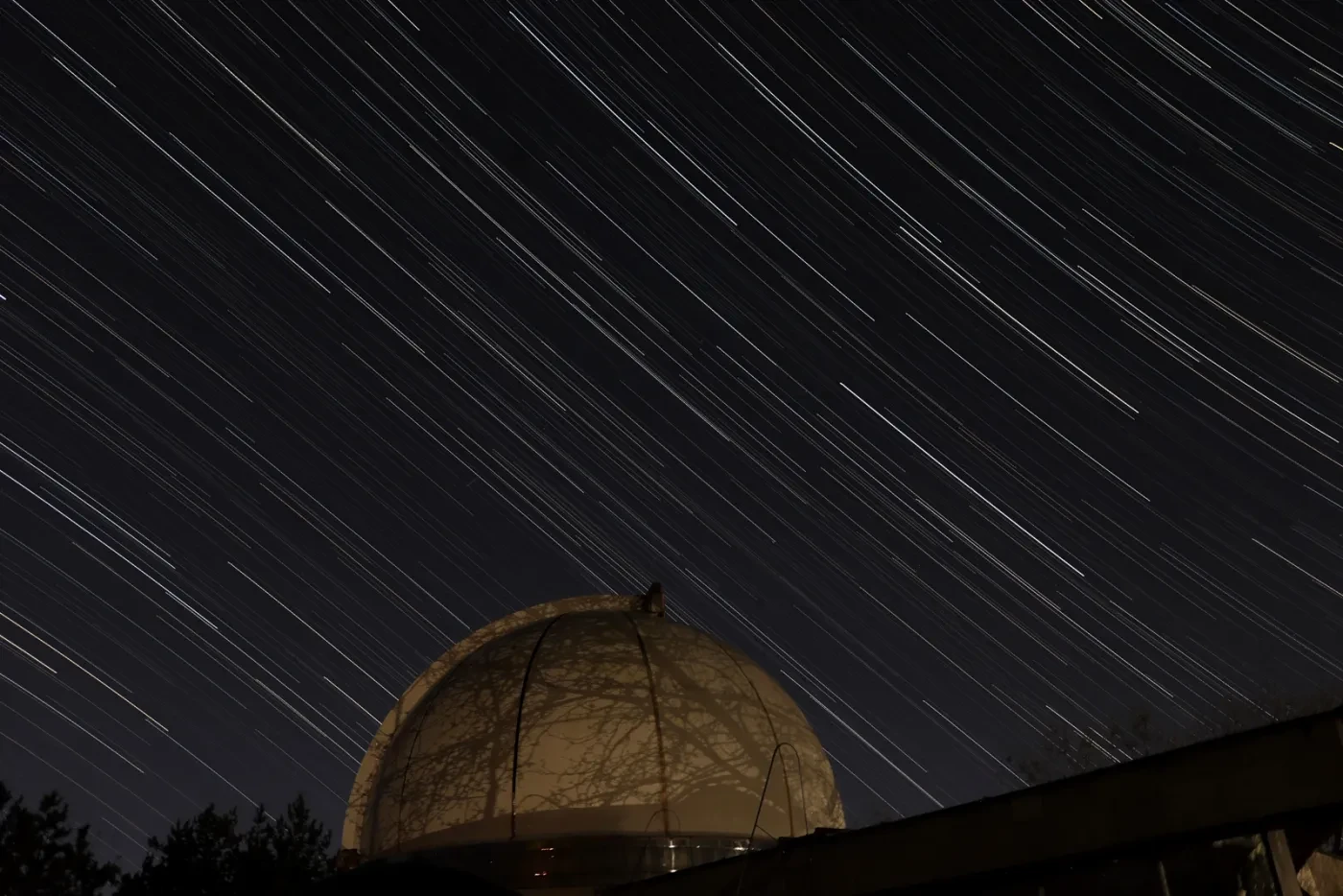
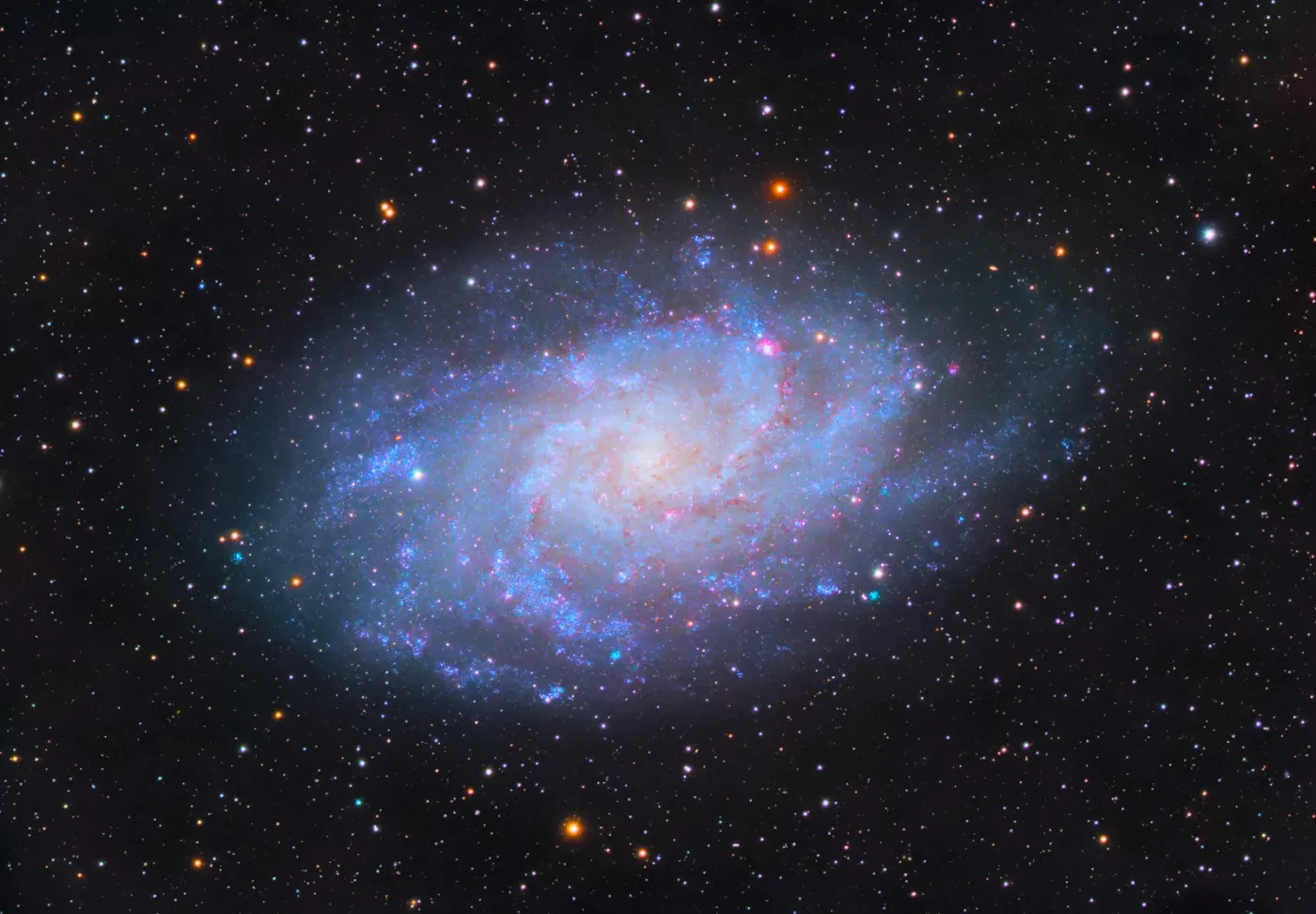

See the full shortlist
Browse the collection of award-winning astrophotography.
Never miss a shooting star
Sign up to our space newsletter for exclusive astronomy news, guides and events from Royal Museums Greenwich.
Our partners


